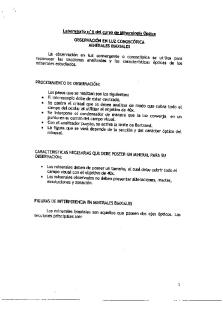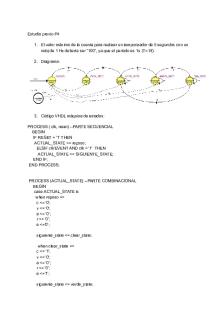practica n6 de historia economica universidad carlos iii de madrid PDF

| Title | practica n6 de historia economica universidad carlos iii de madrid |
|---|---|
| Course | Historia Económica |
| Institution | Universidad Carlos III de Madrid |
| Pages | 2 |
| File Size | 38 KB |
| File Type | |
| Total Downloads | 75 |
| Total Views | 169 |
Summary
practica n6 de historia economica universidad carlos iii de madrid primer curso admin de empresas...
Description
1. We can see that between 1990 and 1993 the number of workers in the firm increases; but when it gets to 1993 it starts decreasing. The reasons for the decrease of the number of workers could be the introduction of technology, ( they won’t need that many workers), because of a decrease in the demand or maybe because of the scarcity of well-qualified workers 2. If we take a look at the first table, we can see a very well-marked decrease in 1991 at the bottom level. We can also check that there is an increase at level four between 1991 and 1992, doubling the percentage of workers. We can also see that between 1993, 1994 and 1995 the number of workers at the top level increases and decreases rapidly; the reasons that might explain these changes could be that businesses try to hire more workers but ones with experience and other professionals and the decrease could be explained by a decrease in the demand. 3. The graph shows the incentive pay and share of small workplaces. We can see that the graph is downward sloping. The x axe shows the share of incentive pay and they axe shows the share of small firms. US is at the highest point of the graph; and the rest of the countries are at the lowest points of the graph; which shows that in those countries there is a predominance of small firms, which usually have less incentives (they are usually familiar companies) Both graphs are downward sloping (negative relation between both axes) The graph shows there will be less incentives as the market gets more regulated. Greece and Portugal are both extreme cases. Positive relation between the two axes. The less controlled the market is, the more incentives there will be. 4. There is a negative correlation between both. Conflicts of interest-> they should negotiate contracts. 5. There is a positive correlation (curve upward sloping) The delegation is higher every time. The higher involvement management, the higher incentive pay . Try not to have interest conflict-> adapt to necessities , same objectives...
Similar Free PDFs

PDF-Unidad-N6 Historia y Critica III
- 33 Pages

Resumen de historia economica
- 77 Pages

Guia de laboratorio N6
- 6 Pages

Examen historia, EVAU (MADRID)
- 2 Pages

Tercera Practica DE Control III
- 24 Pages

Test Carlos III T5
- 3 Pages
Popular Institutions
- Tinajero National High School - Annex
- Politeknik Caltex Riau
- Yokohama City University
- SGT University
- University of Al-Qadisiyah
- Divine Word College of Vigan
- Techniek College Rotterdam
- Universidade de Santiago
- Universiti Teknologi MARA Cawangan Johor Kampus Pasir Gudang
- Poltekkes Kemenkes Yogyakarta
- Baguio City National High School
- Colegio san marcos
- preparatoria uno
- Centro de Bachillerato Tecnológico Industrial y de Servicios No. 107
- Dalian Maritime University
- Quang Trung Secondary School
- Colegio Tecnológico en Informática
- Corporación Regional de Educación Superior
- Grupo CEDVA
- Dar Al Uloom University
- Centro de Estudios Preuniversitarios de la Universidad Nacional de Ingeniería
- 上智大学
- Aakash International School, Nuna Majara
- San Felipe Neri Catholic School
- Kang Chiao International School - New Taipei City
- Misamis Occidental National High School
- Institución Educativa Escuela Normal Juan Ladrilleros
- Kolehiyo ng Pantukan
- Batanes State College
- Instituto Continental
- Sekolah Menengah Kejuruan Kesehatan Kaltara (Tarakan)
- Colegio de La Inmaculada Concepcion - Cebu









